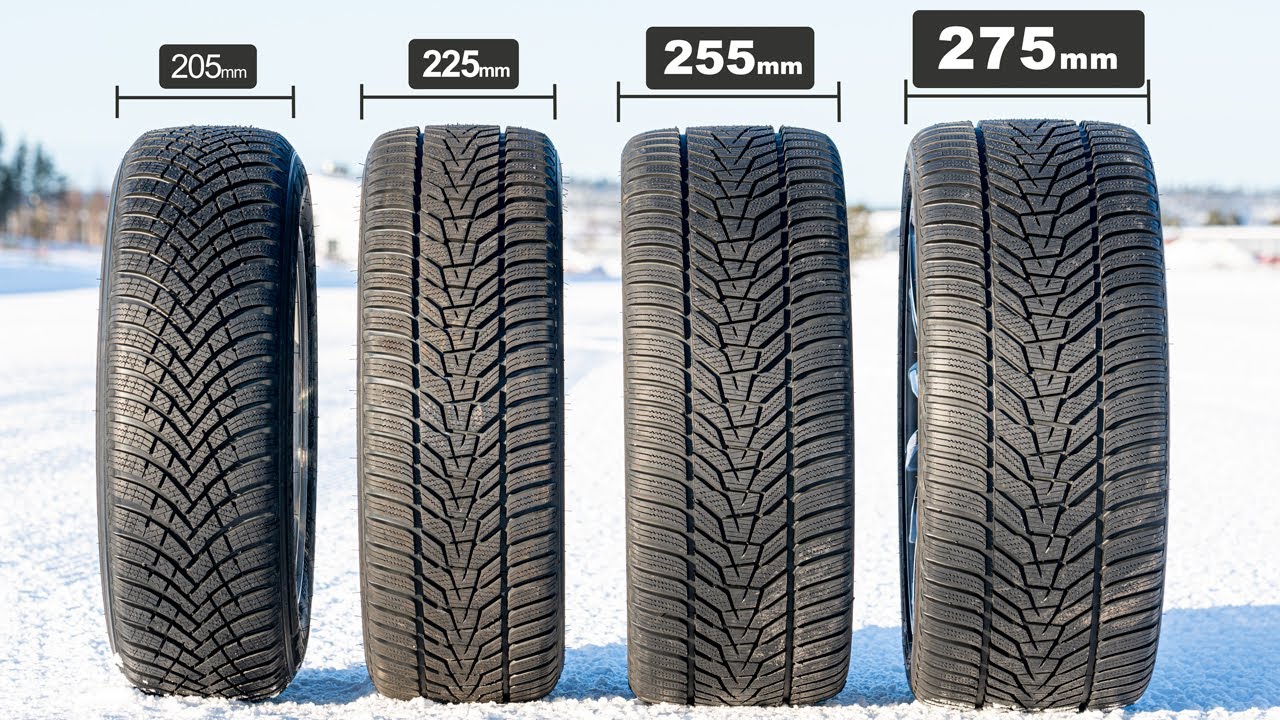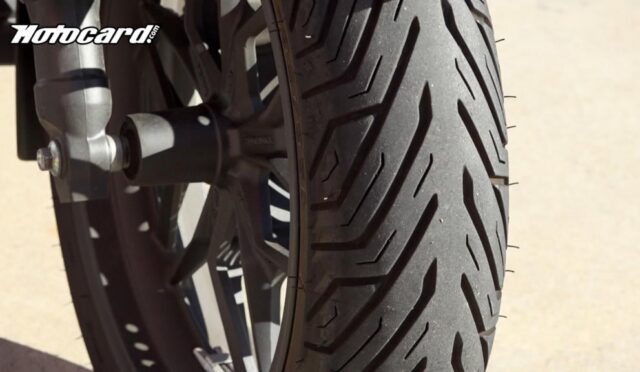Wider tires are often seen as a performance upgrade. However, they come with several disadvantages that users should consider. Understanding these drawbacks is crucial for making an informed decision.
One major disadvantage of wider tires is reduced fuel efficiency. Wider tires have more surface area in contact with the road. This increased friction can lead to higher fuel consumption. Studies show that wider tires can reduce fuel efficiency by 5% to 10% compared to standard tires.
Wider tires can also impact handling. While they may provide better grip in certain conditions, they can make a vehicle feel less stable in others. The handling may become heavier, especially in tight corners. This can affect the overall driving experience, especially for those who prefer a more agile feel.
Another concern is the cost. Wider tires tend to be more expensive than their standard counterparts. Prices can vary widely, but a set of wider tires can range from $100 to $300 each, depending on the brand and specifications. This cost adds up quickly, especially when considering the need for new rims to accommodate the wider tires.
Wider tires may also cause increased road noise. The larger tread pattern can lead to a noisier ride. This can be particularly bothersome on long trips, where comfort is essential. Drivers may find themselves turning up the radio to drown out the sound.
Additionally, wider tires can lead to uneven wear. If not properly aligned, they may wear out faster. This can result in more frequent replacements, further increasing maintenance costs. Regular checks and adjustments become crucial.
Finally, wider tires can affect the vehicle’s suspension. They can put extra stress on suspension components. This may lead to increased wear and tear and more costly repairs down the line. Maintaining the suspension system is essential for ensuring longevity.
In conclusion, while wider tires offer some benefits, they also come with notable disadvantages. Reduced fuel efficiency, handling changes, higher costs, increased road noise, uneven wear, and added stress on suspension should be carefully considered. Weighing these factors can help you make the best choice for your driving needs.
Impact Of Wider Tires On Fuel Efficiency And Performance
Wider tires have become popular among many riders and vehicle owners. They are often praised for their stability and grip. However, there are several disadvantages to consider. Understanding these can help you make better choices for your vehicle’s performance and efficiency.
One major downside of wider tires is their impact on fuel efficiency. Wider tires tend to have a larger contact area with the road. This can increase rolling resistance. When the rolling resistance is higher, the engine has to work harder. As a result, fuel consumption goes up. This can lead to more frequent stops at the gas station.
Another issue is the weight of wider tires. They are generally heavier than standard tires. This extra weight can impact acceleration and braking. It may take longer to reach higher speeds. Additionally, stopping distances can increase, which can affect overall safety.
| Factor | Impact |
|---|---|
| Fuel Efficiency | Decreased due to higher rolling resistance |
| Weight | Increased, affecting acceleration and braking |
| Tire Wear | Uneven wear may occur, leading to more frequent replacements |
| Handling | Can be affected, particularly in wet conditions |
| Curb Weight | Higher weight may reduce overall vehicle performance |
Wider tires can also lead to increased road noise. The larger surface area can generate more sound while driving. This can make for a less enjoyable ride, especially on long trips. Moreover, the cost of wider tires can be higher. They might require special wheels or adjustments to fit correctly.
Another important consideration is handling. Wider tires may improve grip on dry surfaces. However, they can create problems in wet conditions. The increased tread may lead to hydroplaning. This can be dangerous for drivers who are not prepared.
In summary, while wider tires offer benefits like improved grip, they come with notable disadvantages. These include reduced fuel efficiency, increased weight, and potential handling issues. Understanding these factors is essential for making informed decisions about tire choices.
Handling Challenges And Stability Issues Associated With Wider Tires
Wider tires are popular among motorcycle and vehicle enthusiasts. However, they come with challenges and stability issues that are important to understand. While wider tires can enhance grip and aesthetics, they also present disadvantages that can affect performance.
One of the main challenges of wider tires is the impact on handling. Wider tires can make a vehicle feel less nimble. This is particularly noticeable during sharp turns or quick maneuvers. The increased surface area can lead to a heavier steering feel. Drivers may find it harder to control their vehicle in certain situations.
Stability issues also arise with wider tires. Although they provide better traction on straight paths, they can cause instability during cornering. The wider footprint can lead to a higher risk of losing grip. This is especially true on wet or uneven surfaces, where wider tires may hydroplane more easily.
Another disadvantage is the increased weight of wider tires. Heavier tires can affect acceleration and braking performance. The added weight may lead to longer stopping distances. This can be a crucial factor in emergency situations where quick reactions are necessary.
Wider tires can also lead to uneven wear and tear. The tire’s contact patch changes, which can cause certain areas to wear faster than others. This uneven wear can result in a need for more frequent tire replacements, increasing overall maintenance costs.
Additionally, installation of wider tires may require modifications to the vehicle. Changes to the suspension and bodywork could be necessary. This can add to the overall expense of outfitting a vehicle with wider tires. Below is a comparison of common issues and their implications:
| Challenge | Implication |
|---|---|
| Handling | Less nimble steering; difficult turning |
| Stability | Higher risk of loss of grip; issues in corners |
| Weight | Longer stopping distances; slower acceleration |
| Uneven Wear | Frequent replacements; increased costs |
| Modification Needs | Additional expenses for adjustments |
Overall, while wider tires may seem appealing, they come with notable disadvantages. It is essential for vehicle owners to weigh these challenges against the benefits. Understanding these factors can lead to better decisions regarding tire choices.
Cost Implications: Maintenance And Replacement Of Wider Tires
Wider tires are popular for their aggressive look and enhanced grip. However, they come with significant cost implications. Understanding these can help you make informed decisions.
One major aspect is maintenance. Wider tires tend to wear out faster than standard tires. This is due to increased surface area in contact with the road. As a result, the cost of replacing wider tires can be higher. On average, a set of wider tires can range from $600 to $1,200, depending on the brand and type.
Here are some of the disadvantages related to maintenance and replacement costs:
- Increased Wear: Wider tires experience more stress, leading to quicker wear and tear.
- Higher Replacement Frequency: The need for more frequent replacements adds to long-term costs.
- Alignment Costs: Wider tires can cause alignment issues, which may require additional adjustments.
- Fuel Efficiency: Wider tires can decrease fuel efficiency, leading to increased fuel costs over time.
Additionally, the installation and balancing of wider tires can incur extra expenses. Professional services are often required, which can cost between $50 and $100 per tire.
| Cost Aspect | Estimated Cost |
|---|---|
| Replacement of Wider Tires | $600 – $1,200 |
| Professional Installation | $50 – $100 per tire |
| Alignment Adjustments | $75 – $150 |
| Fuel Efficiency Loss | Varies based on usage |
In conclusion, while wider tires may enhance performance and aesthetics, they also bring higher costs. Maintenance and replacement expenses can add up quickly. Understanding these implications is essential for any vehicle owner considering a switch to wider tires.
Wider tires can increase rolling resistance, which may lead to reduced fuel efficiency compared to narrower options.
While wider tires can enhance grip, they can also cause less responsive handling in certain conditions, particularly in wet weather.
Yes, wider tires generally cost more to replace and may require specialized wheels or modifications, increasing overall maintenance costs.
Wider tires can result in a harsher ride due to their stiffer sidewalls, transmitting more road imperfections to the vehicle’s occupants.
Wider tires often produce more road noise, which can detract from the overall driving experience, especially on longer journeys.
While wider tires can offer improved grip, they may also contribute to a longer braking distance on certain surfaces, especially if not matched properly with the vehicle’s braking system.
Wider tires can wear unevenly if not aligned properly, leading to shorter lifespan and increased replacement frequency.
No, wider tires may not fit all vehicles without modifications, potentially leading to rubbing against the wheel wells or suspension components.
Wider tires can increase aerodynamic drag and rolling resistance, which often leads to higher fuel consumption during driving.
Yes, wider tires can create additional drag, which may slow down acceleration compared to narrower tires, especially in lower-powered vehicles.








